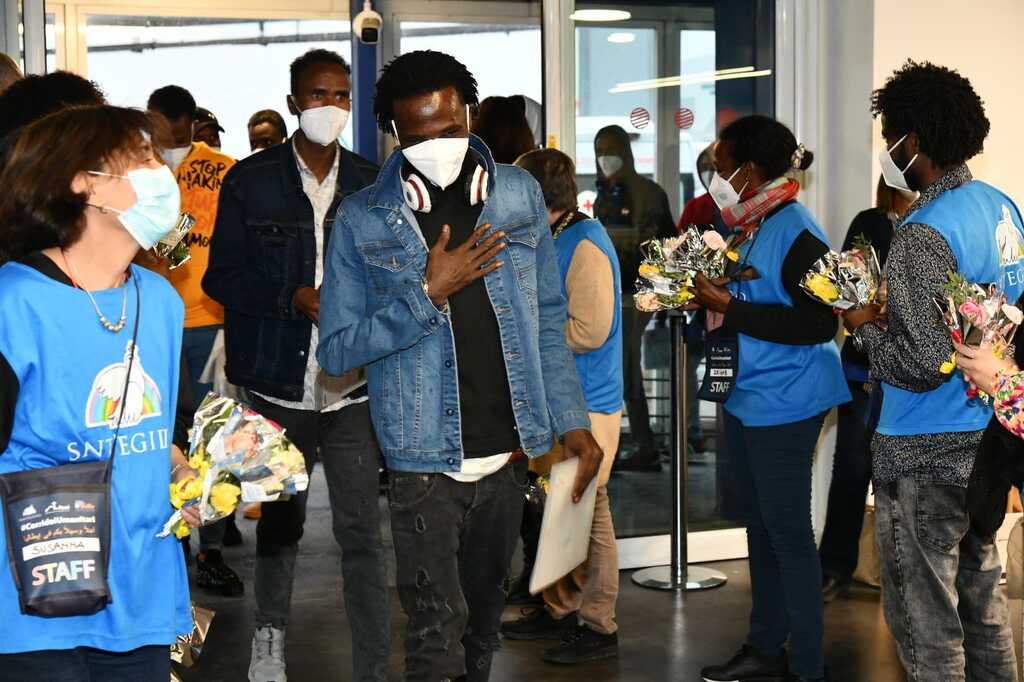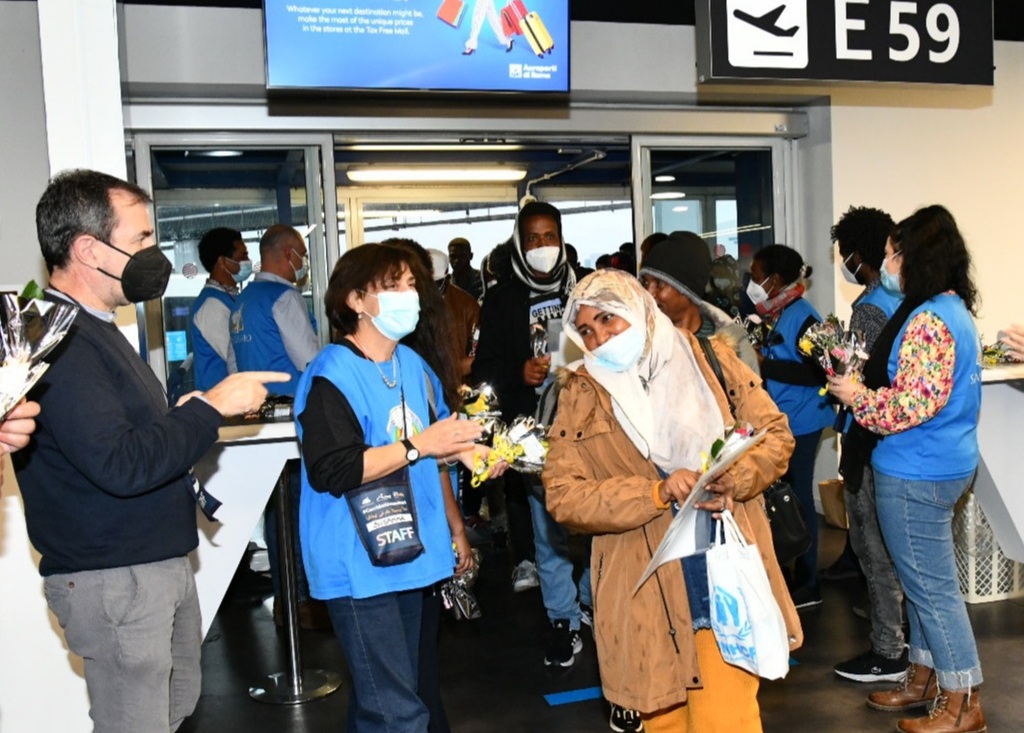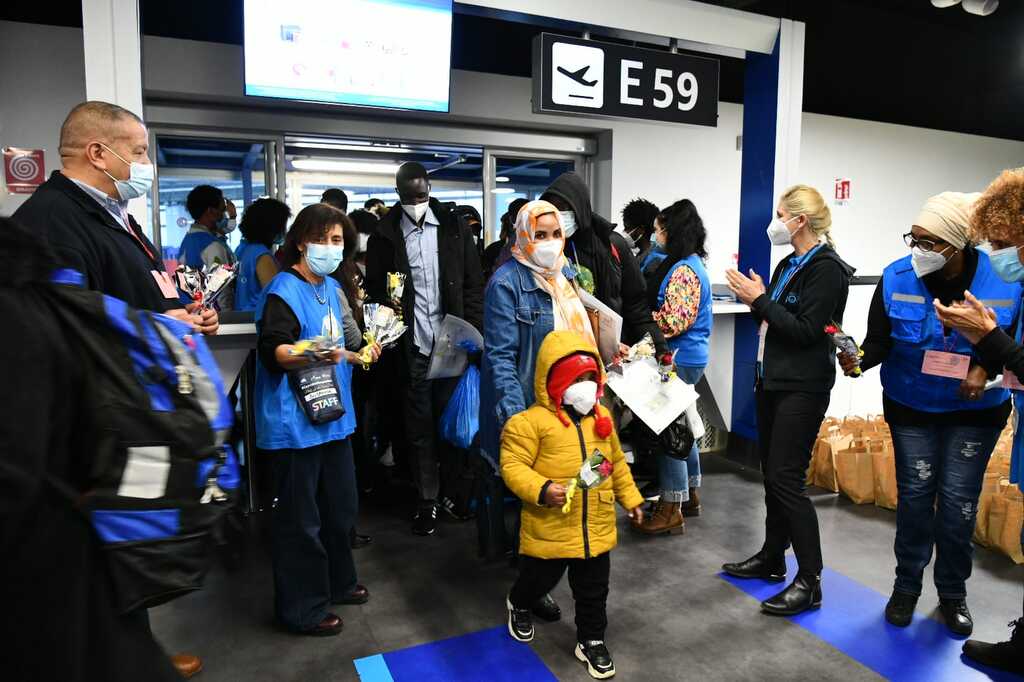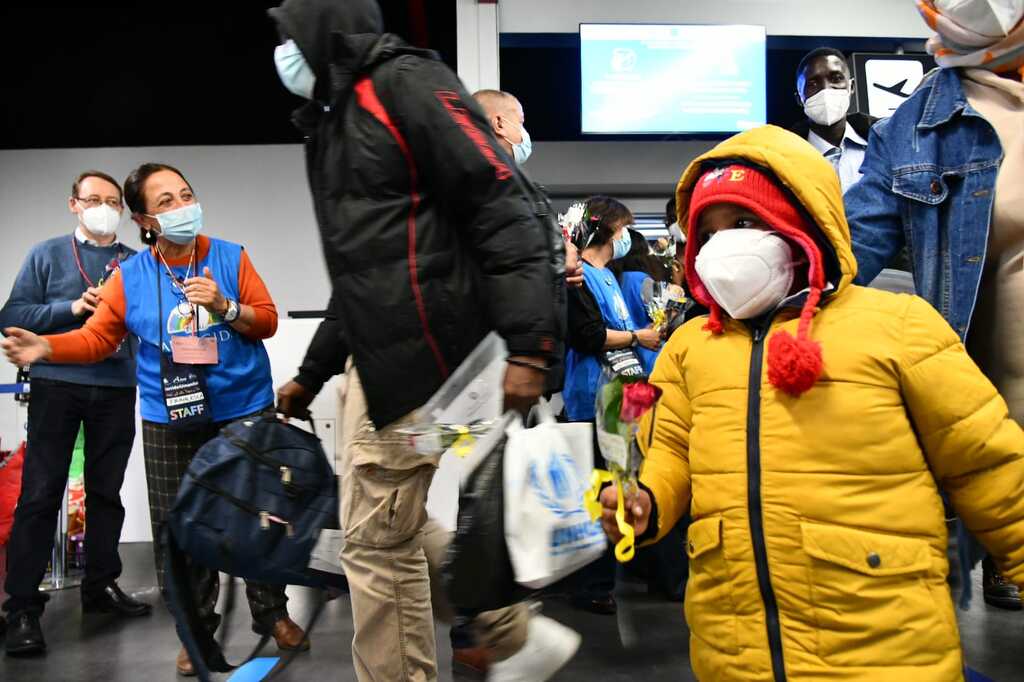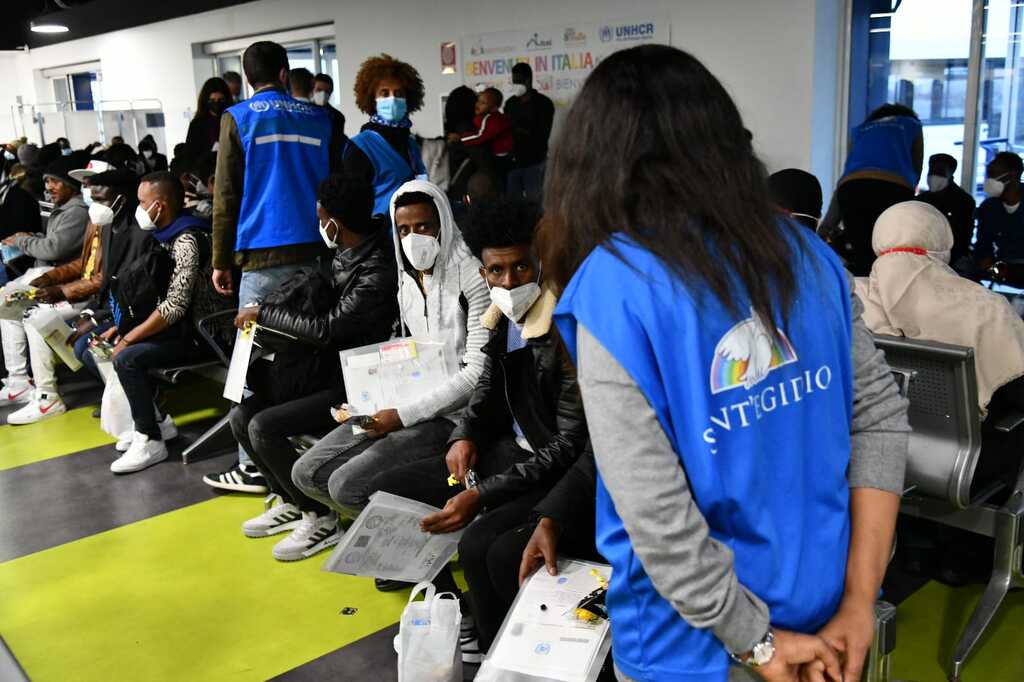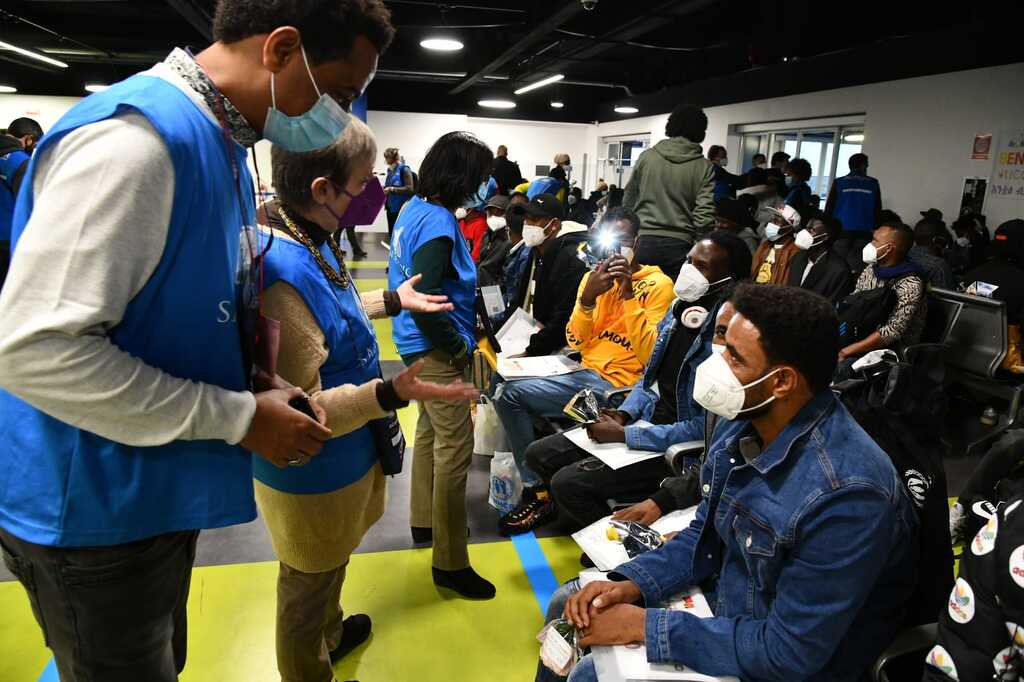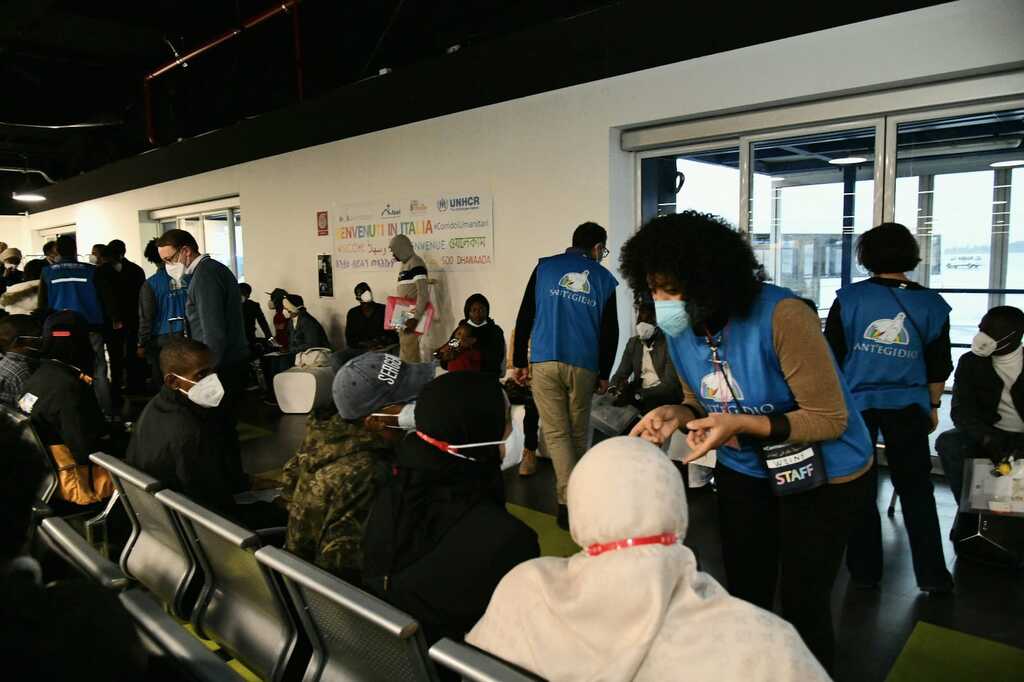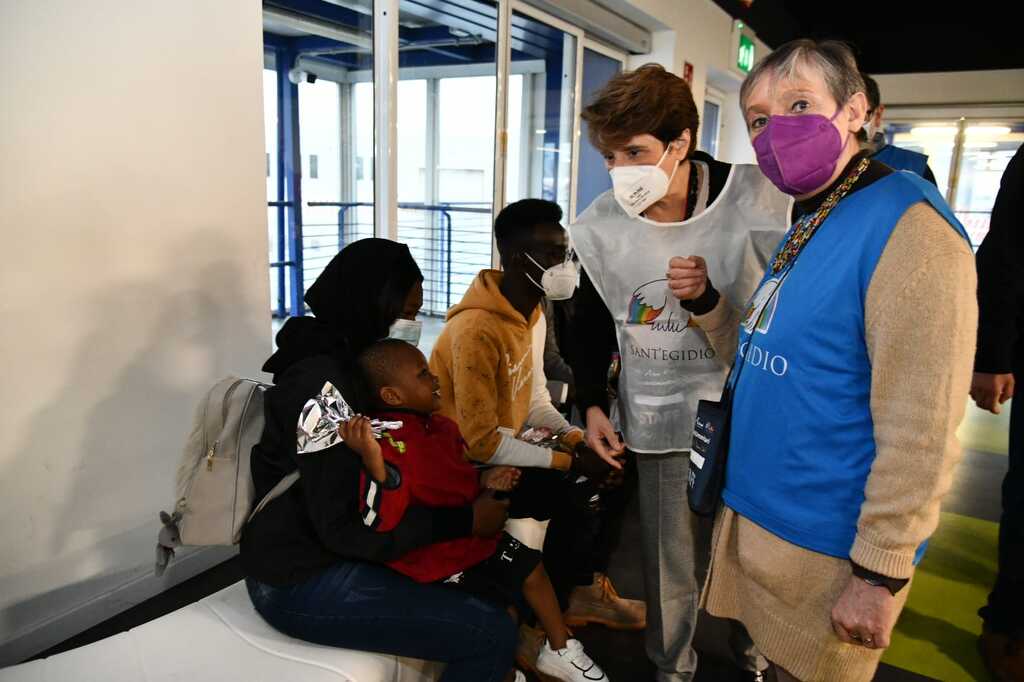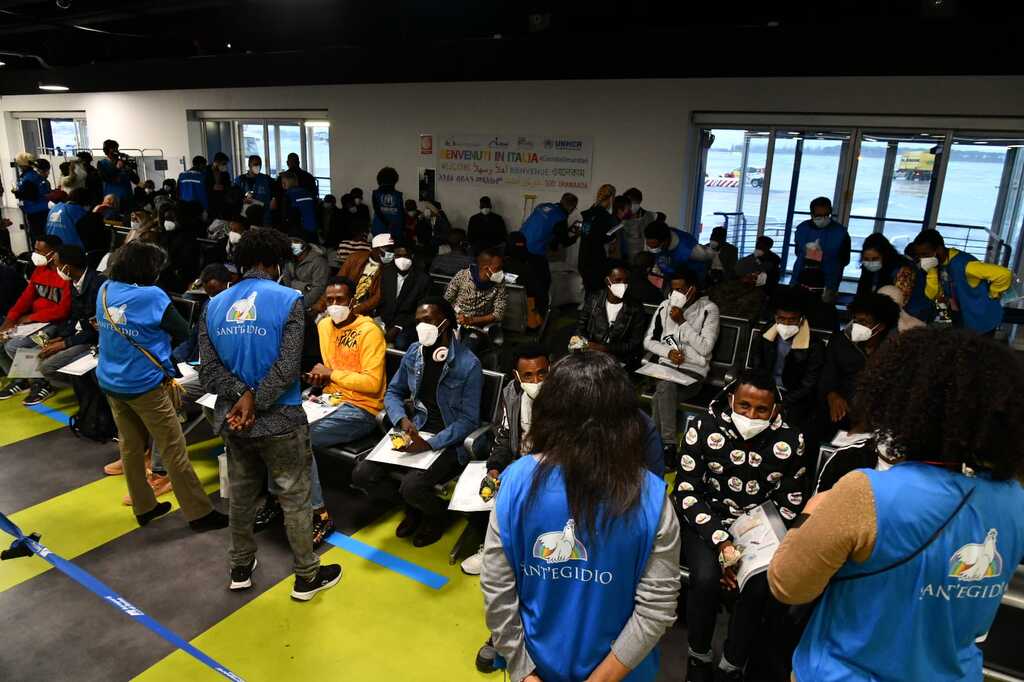93 asylum seekers from Libya have arrived today at Fiumicino. After their arrival, they will be able to apply for refugee status, which will give them access to protection.
The asylum seekers travelled on a charter flight operated by UNHCR, the UN Refugee Agency. This is the first arrival that shows the implementation of a protocol, which was signed by the Ministry of Interior, Ministry of Foreign Affairs and International Cooperation, UNHCR, Community of Sant'Egidio, Federation of Evangelical Churches in Italy, and Tavola Valdese. The flights are organized in accordance with a new mechanism that combines the best practices of emergency evacuations and humanitarian corridors. Since they were established in 2016, the Humanitarian Corridors have allowed 4,023 individuals to arrive in Europe, 3,313 of them in Italy.
This procedure of humanitarian admissions will cover 500 vulnerable people, including children, trafficked women, survivors of violence and torture, and people in serious health conditions that were forced to flee their countries. In particular, this operation depends on the collaboration of the National Institute for Health, Migration and Poverty. Moreover, some of the individuals have recently been released from detention, while others were captives of trafficking networks.
The asylum seekers will be welcomed by the Community of Sant'Egidio, FCEI, and Tavola Valdese. Specifically, according to the model of humanitarian corridors, they will follow the path of integration with the exception of 3 unaccompanied foreign minors who, by virtue of their specific vulnerability, will adhere to dedicated projects of the national reception system.
Michele di Bari, who is the Head of the Department for Civil Liberties and Immigration, asserts "The Ministry of the Interior has promoted this Protocol, which combines the success of previous Humanitarian Corridor programs with the outstanding evacuation procedures that have been conducted in recent years. This confirms Italy as a European model for legal entry points, which are dedicated for refugees and vulnerable persons". Furthermore, he argues that "it is a happy intuition that incorporates the expertise of the Ministry of Foreign Affairs and International Cooperation, Ministry of Interior, UNHCR, and the solidarity drive of civil society organizations that are committed to social issues. We are happy to offer to the incoming refugees the opportunity of a safe entry and better future."
Luigi Maria Vignali, who is the Director General for Italian Citizens Abroad and Migration Policies of the Ministry of Foreign Affairs and International Cooperation, claims that "the Farnesina has strongly supported the resumption of humanitarian evacuations from Libya, by closely dialoguing with the authorities of that country". He also asserts that "once again, this is a demonstration of the strong added value of our Embassy in Tripoli and Farnesina's ongoing commitment to protect the refugees."
Chiara Cardoletti, who is the UNHCR Representative for Italy, the Holy See, and San Marino, says: "We are grateful to Italy for making these life-saving operations possible for such vulnerable individuals. Italian institutions and civil societies have once again demonstrated the value of working together to welcome and integrate refugees". Additionally, she argues that “the conditions are terrible for those individuals who are fleeing from Libya, and we hope that Italy's example and commitment can soon be followed by other governments."
Marco Impagliazzo, who is the President of the Community of Sant'Egidio, argues that “finally, the nightmare of abuse and violence ends for the people who are in the detention camps; indeed, a different future opens up under the emblem of human rights". Moreover, he asserts that "we are happy to welcome the asylum seekers and to start for all of them the integration path of the humanitarian corridors, which have been already tested. It is a strong message also for Europe, which is often insensitive to different phenomena, such as immigration; these situations need to be addressed with urgency and, at the same time, with humanity".
Alessandra Trotta, who is the moderator of the Tavola Valdese, claims that "in the wake of the consolidated experience of humanitarian corridors, our diaconal organization is ready to welcome and support these women, men, and children who have survived terrible occurrences in order to meet their basic needs for dignity, human and social inclusion. A commitment to solidarity that is part of a European vision. Specifically, this outlook does not raise walls of indifference or selfishness in regards to the tragedies of war, exploitation, and serious injustices that tear apart individuals’ lives and hopes for a decent future".
Concetta Mirisola, who is the Director-General of NIHMP, asserts that "since 2017, NIHMP has provided health assistance during the disembarkation of persons. These individuals arrived from Libya through evacuation corridors organised by the Ministry of Interior and UNHCR. In particular, NIHMP’s aid is now included within a wider collaborative arrangement between the public system and private organizations by honoring in this way a great country such as Italy, which has been always close to the vulnerable people and those who are fleeing from wars”.
Furthermore, Daniele Garrone, who is the President of the Federation of Evangelical Churches in Italy, argues that "today, the most important thing is that these people have escaped the Libyan lagers. The humanitarian corridors are the first step of a larger project. Hence, they are a piece of a reception system that focuses on solidarity, which Europe should take charge of. As Protestant churches that are located in Lampedusa, we assist people who have left Libya. After unprecedented violence, these individuals risk or lose their lives; thus, it cannot happen again".
Since 2017, UNHCR has evacuated or resettled 6,826 refugees and asylum seekers from Libya; 968 of them are now in Italy. After a one-year hiatus, evacuations resumed this month because Libyan authorities lifted the ban on humanitarian flights.
Regular and safe channels symbolize an anchor of salvation for refugees, by allowing them to rebuild their future in dignity without being forced to undertake dangerous journeys due to unscrupulous traffickers. Meanwhile, these routes even represent a tangible sign of solidarity towards the nations that are hosting the largest refugee population.
Today's videos














